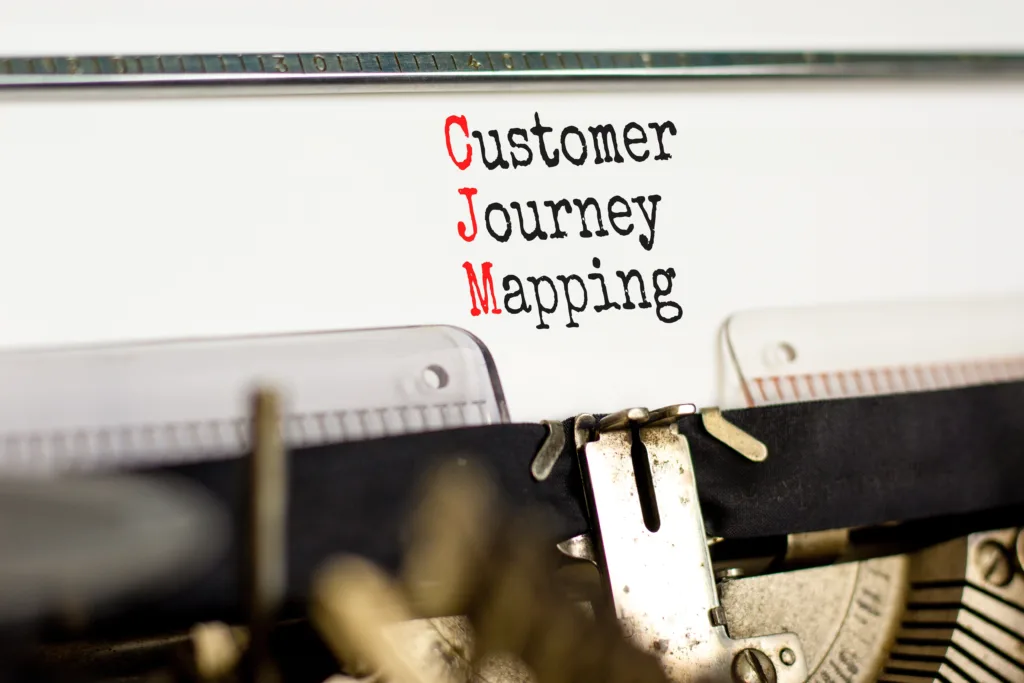Unlock Business Growth with Expert Customer Journey Mapping Techniques
Introduction
Customer journey mapping is an analytical tool that enables businesses to delineate the series of interactions a customer has with a brand while striving to fulfill a specific need or accomplish a goal. This tool transcends basic process mapping by incorporating the customer’s emotional journey and experiences, not just their actions or transactions.
At its core, customer journey mapping involves systematically deconstructing the customer’s experience into discrete interactions or touchpoints, each examined through the lens of the customer’s perspective. This approach goes beyond mere functional aspects to include emotional responses and behavioral drivers. By doing so, it provides a holistic view of the customer experience, encompassing both the tangible and intangible elements of customer engagement.
In practice, customer journey mapping serves multiple strategic functions. Primarily, it identifies key moments of truth – critical interactions where customer decisions are made and opinions are formed. It also uncovers gaps between desired customer experience and actual service delivery, highlighting areas of friction and opportunities for optimization.
Advanced journey maps often integrate quantitative data, such as conversion rates and customer satisfaction scores, offering a data-driven basis for decision-making. This integration of qualitative insights with quantitative metrics facilitates a more nuanced understanding of customer behaviors and preferences.
For organizations, the ultimate objective of customer journey mapping is to refine and enhance the customer experience at every touchpoint. This continuous improvement drives customer loyalty, reduces churn, and can significantly impact the bottom line. In an increasingly competitive landscape, effective customer journey mapping can be a key differentiator, offering clear insights into customer needs and expectations, and providing a roadmap for delivering exceptional customer experiences.
Navigating the digital marketplace, businesses grapple with the nuances of customer behavior and the pressing challenge of shopping cart abandonment. With an alarming average cart abandonment rate of 70.19%, a figure derived from an amalgamation of 49 different studies, the phenomenon presents more than a mere operational hurdle; it signifies a deeper chasm in the eCommerce customer journey (Baymard Institute, 2024). This statistic underscores a critical moment of customer drop-off and points to a broader issue: the misalignment of sales strategies with customer expectations.
Parallel to this challenge is the striking disconnect between business buyer expectations and the reality of sales interactions. As reported by Salesforce, a substantial 86% of business buyers are more likely to purchase from companies that understand their goals. However, this expectation is met with a stark reality where 59% of buyers feel that sales representatives do not invest the time to comprehend their needs. Furthermore, while 84% of business buyers expect sales reps to act as trusted advisors, 73% characterize most sales interactions as purely transactional (Salesforce, n.d.). These insights reflect the necessity for businesses to engage in robust customer journey mapping that transcends the mere execution of sales tactics and evolves into understanding and addressing the comprehensive needs and goals of customers.

How to Create a Customer Journey Map?
- Define Your Objectives: The first step in creating an effective customer journey map is to establish clear objectives. These might include improving customer satisfaction, reducing churn, or enhancing the purchase process. Setting SMART (Specific, Measurable, Achievable, Relevant, Time-Bound) goals ensures that the mapping process remains focused and productive (The Balance Money, n.d.).
- Conduct Customer Research: To understand your customers’ needs, motivations, and pain points, engage in thorough customer research. This can be achieved through surveys, interviews, and analyzing customer feedback. Gathering qualitative data is crucial for creating an accurate representation of the customer journey (Moosend, n.d.).
- Segment Your Audience and Create Personas: After gathering data, segment your audience and develop detailed personas. This process involves categorizing customers based on shared characteristics and creating profiles that represent key segments of your market. Personas should reflect the customers’ goals, challenges, and behaviors to guide the journey mapping process effectively (Moosend, n.d.).
- List All Touchpoints: Identify all possible touchpoints your customers have with your brand. This comprehensive listing should cover all stages of the customer lifecycle, from initial awareness to post-purchase interactions.
- Social Media Interactions:
- Unique Action: Responsive customer service via direct messages, akin to Zappos’ renowned approach to customer interaction on social platforms.
- Example: Zappos sets a high bar in social media engagement, responding promptly and helpfully to customer inquiries and feedback.
- Website Visits:Unique Action: Personalized product recommendations, like Amazon’s data analytics for tailored suggestions.
- Example: Amazon enhances its user experience by suggesting products based on browsing and purchase history, increasing relevance and potential sales.
- Email Communications
- Unique Action: Segment-specific content and exclusive offers, inspired by Spotify’s personalized playlists sent via email.
- Example: Spotify uses listening data to craft and send user-specific emails, making each communication feel personal and engaging.
- In-Store Experiences (if applicable):
- Unique Action: Personalized shopping experiences or in-store events like Apple’s Genius Bar.
- Example: Apple’s in-store Genius Bar offers a unique personal tech support experience, enhancing the customer’s relationship with the brand.
- Customer Service Interactions:
- Unique Action: Proactive support, like Starbucks’ approach to customer engagement through its mobile app.
- Example: Starbucks’ mobile app not only streamlines ordering and payment but also offers personalized rewards, enhancing the overall customer service experience.
- Post-Purchase Engagement:
- Unique Action: Personalized thank-you note or special offers for repeat purchases, as exemplified by Starbucks’ post-purchase communication.
- Example: Starbucks engages customers post-purchase with tailored offers and rewards through its app, encouraging repeat visits and fostering loyalty.
- Map the Journey for Each Persona: For each persona, chart their journey from start to finish. This should include every touchpoint, along with the customer’s actions, thoughts, and feelings at each stage. Creating a narrative around these journeys helps in understanding the customer experience holistically.
- Analyze and Find Gaps: Utilize various data sources, such as Google Analytics, CRM systems like Salesforce, or social media listening tools like Brand24, to analyze the customer journey. Look for gaps between the customer’s expectations and their actual experience. Identifying these discrepancies is essential for pinpointing areas that need improvement (Moosend, n.d.).
- Implement Changes and Monitor Results: Based on the insights gathered, make necessary changes across the identified touchpoints. Continuously monitor the impact of these changes using customer feedback and surveys (Zendesk, n.d.). Adjustments should be made iteratively to ensure the journey aligns with the evolving needs and preferences of customers.

Data-centric approach to mapping the eCommerce customer journey
- Developing a Deeper Customer Understanding Crafting customer personas is an art that demands a marriage of data and empathy. In eCommerce, we dissect not only the ‘what’ of customer interactions but also the ‘why’ behind each click and conversation. Shopify’s strategy offers a blueprint for personalizing the customer experience that resonates with the very core of consumer desires (Dopson, 2023). By leveraging sophisticated tools like Google Analytics, businesses can tap into the rich vein of customer behavior, extracting insights that lead to anticipatory service models. Such an approach transforms data points into a narrative, where each chapter reveals customer aspirations and apprehensions, guiding them through a tailored journey that feels intimately familiar.
- Mapping Multichannel Customer Pathways Today’s eCommerce landscape is an ecosystem of intertwined channels where a customer’s journey meanders through social media, email, online marketplaces, and beyond. Analyzing these pathways is akin to charting a river’s course through varied terrains. Platforms such as Klaviyo or Mailchimp provide a granular view of how email interactions contribute to the journey’s ebb and flow, allowing businesses to nurture leads with precision and care. The aim is to orchestrate a symphony of touchpoints that harmonize into a coherent and compelling customer narrative, moving beyond transactions into meaningful engagements.
- Personalizing Interactions at Every Touchpoint The capstone of the journey mapping is the personalized interaction—this is where a business can truly distinguish itself. It’s about greeting every visitor, not with a generic welcome, but with an experience that mirrors their expectations, history, and preferences. Employing platforms like Nosto, businesses can dynamically adapt their websites to cater to individual user profiles, creating a shopping experience that feels bespoke. This personalized approach extends to all facets of the journey, ensuring that from the awareness stage to the post-purchase follow-up, customers feel a continuous thread of attentiveness and recognition. Such personalization acts as the glue that not only holds the journey together but also elevates it, transforming passive browsers into active participants in the eCommerce experience.
Through this refined blueprint, businesses can chart a course that not only navigates the choppy waters of eCommerce but also sails towards a horizon of increased customer loyalty and reduced cart abandonment. The strategies outlined here are not merely about data collation; they are about crafting a journey that speaks to the customer, addressing their nuanced needs at every stage.

What can you do at every stage to improvise the customer journey?
Enhancing customer experience at every stage of the journey involves a strategic approach tailored to each touchpoint. Here are suggestions for improvement at various stages, along with new examples of companies that have excelled in these areas:
Awareness Stage
- Content Marketing & SEO: Invest in high-quality, informative content that addresses your audience’s pain points and interests.
- Example: HubSpot excels in creating educational content, drawing potential customers through valuable resources.
- Social Media Engagement: Use social platforms to engage with your audience in a meaningful way, such as through interactive posts or community discussions.
Example: GoPro engages its audience with user-generated content, showcasing real-life applications of its products.
Consideration Stage
- Interactive Website Features: Implement tools like quizzes or configurators to help customers choose the right product.
- Example: Warby Parker uses a virtual try-on feature, allowing customers to see how glasses would look on them before buying.
- Customer Reviews and Testimonials: Display genuine customer reviews prominently to build trust.
- Example: TripAdvisor provides extensive user-generated reviews that help others make informed decisions.
Purchase Stage
- Seamless Checkout Process: Streamline the checkout process to minimize friction.
- Example: ASOS offers a simple and user-friendly checkout process, reducing cart abandonment.
- Multiple Payment Options: Provide various payment methods, including digital wallets and financing options.
- Example: Klarna partners with stores to offer flexible payment options, enhancing the purchase experience.
Post-Purchase Stage
- Effective Customer Support: Offer multiple channels for customer support, like live chat, email, and phone support.
- Example: Zappos is renowned for its exceptional customer service, available 24/7.
- Loyalty Programs: Implement loyalty programs that reward repeat purchases.
- Example: Sephora’s Beauty Insider program offers points, rewards, and exclusive events to loyal customers.
Retention Stage
- Personalized Email Marketing: Send tailored recommendations and offers based on past purchases.
- Example: Netflix sends personalized show recommendations based on viewing history.
- Customer Feedback Surveys: Regularly collect and act on customer feedback to continuously improve the product or service.
- Example: Slack frequently incorporates user feedback into its product updates.
Advocacy Stage
- Referral Programs: Encourage satisfied customers to refer friends through incentives.
- Example: Dropbox offers additional storage space for both referrer and referee, encouraging word-of-mouth promotion.
- Community Building: Create a sense of community around your brand through forums, social media groups, or events.
- Example: Harley-Davidson has fostered a strong community of brand enthusiasts and riders, enhancing brand loyalty.
By focusing on these enhancements at each stage of the customer journey, you can create a more enjoyable and seamless experience, increasing customer satisfaction and loyalty.

Benefits of Customer Journey Mapping
Improved Customer Insights: Customer journey mapping uncovers the intricacies of the customer experience, revealing key insights at every touchpoint. This deep dive helps identify specific areas of friction, unmet needs, and opportunities to delight customers.
- Example: Spotify uses customer data to identify listening habits, allowing them to create highly personalized playlists and recommendations.
Enhanced Personalization: Armed with detailed journey maps, companies can customize interactions and offers, significantly boosting customer engagement and satisfaction.
- Example: Netflix’s algorithm tailors content recommendations based on individual viewing habits, enhancing the user’s experience.
Optimized Resource Allocation: Understanding the impact of various touchpoints allows businesses to strategically allocate resources, ensuring crucial customer interactions are optimized for maximum effect.
- Example: American Express uses customer feedback to refine its customer service processes, focusing resources on areas that enhance the cardholder experience.
Cross-Functional Collaboration: Journey mapping encourages collaboration across departments, fostering a unified customer-centric mindset and a holistic approach to improving customer experience.
- Example: Disney excels in cross-functional collaboration, ensuring a seamless and magical experience across its parks, resorts, and online platforms.
Data-Driven Decision Making: Rooted in real customer data, journey maps guide more strategic, evidence-based decisions, aligning business initiatives with customer needs and preferences.
- Example: Airbnb uses customer interaction data to optimize its platform, making informed decisions to simplify the booking and hosting process.
The use of sophisticated tools and data analytics, such as Google Analytics and CRM systems like Salesforce, further enriches this understanding, enabling businesses to identify critical touchpoints and moments of truth in the customer journey. The implementation of these insights allows for targeted improvements that can lead to increased customer satisfaction, loyalty, and ultimately, business success.
Furthermore, the process of journey mapping fosters cross-departmental collaboration and a shared customer-centric vision within an organization. This unified approach is vital in today’s complex and ever-evolving business landscape, where understanding and meeting customer expectations is key to staying competitive.
In essence, customer journey mapping is not just a strategic tool, but a continuous, dynamic process that requires ongoing attention and adaptation. By staying committed to understanding and improving the customer journey, businesses can build stronger relationships with their customers and create more meaningful, lasting connections.
If you have questions or need assistance executing these strategies, our team is available at hello@tidalcommerce.ca.
Footnotes:
- The Balance Money. (n.d.). Elements of a Smart Business Goal.
- Moosend (n.d.). How to Create Buyer Personas.
- Moosend (n.d.). What Data You Need for a Customer Journey Map.
- Zendesk. (n.d.). Are Customer Surveys Effective?
- Baymard Institute. (2024). 49 Cart Abandonment Rate Statistics 2024.
- Salesforce. (n.d.). Much like consumers, business buyers see a gap between the standards that have been set and the reality they experience.


